How to Promote 21st Century Skills in Your School
All Posts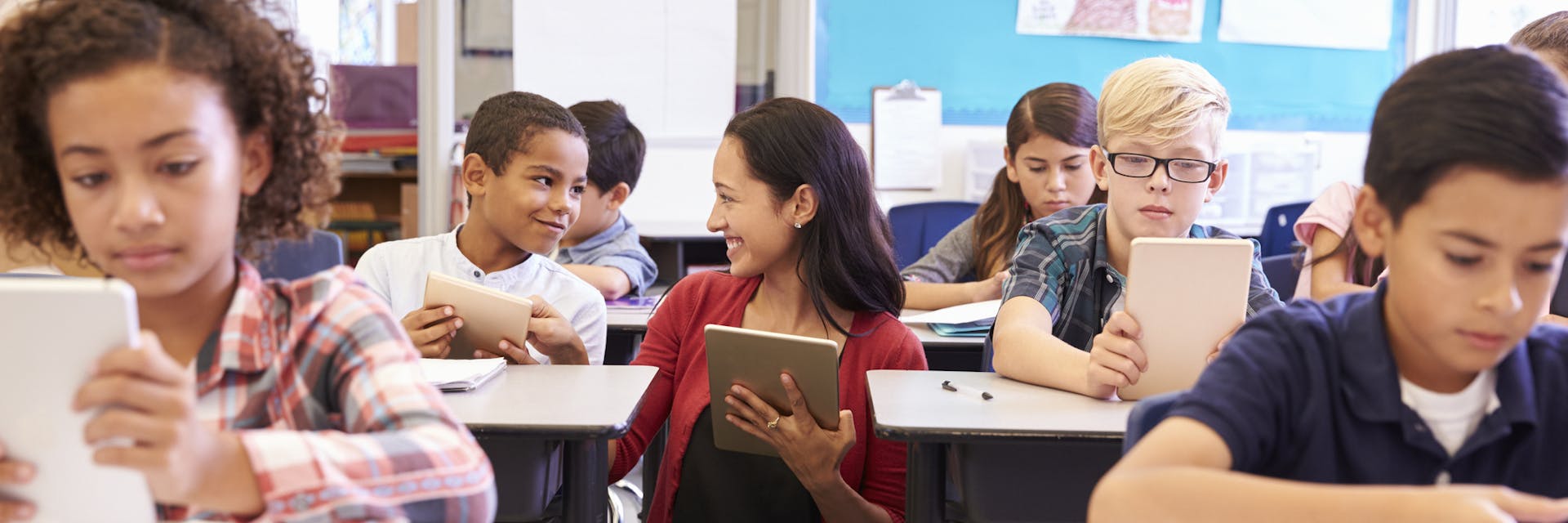
The year is 1999. Cellphones are clunky, Napster has been launched, the Matrix was just released, and the euro is created.
Fast forward to now — phones and tablets are sleek and ever-changing, streaming services have changed how we consume entertainment, and an increasingly global economy has transformed how we do everything from grocery shopping to vacations.
In the face of such rapid change, educators and activists are promoting 21st century skills to prepare students for an unknown future and jobs that have yet to be created.
What are 21st century skills?
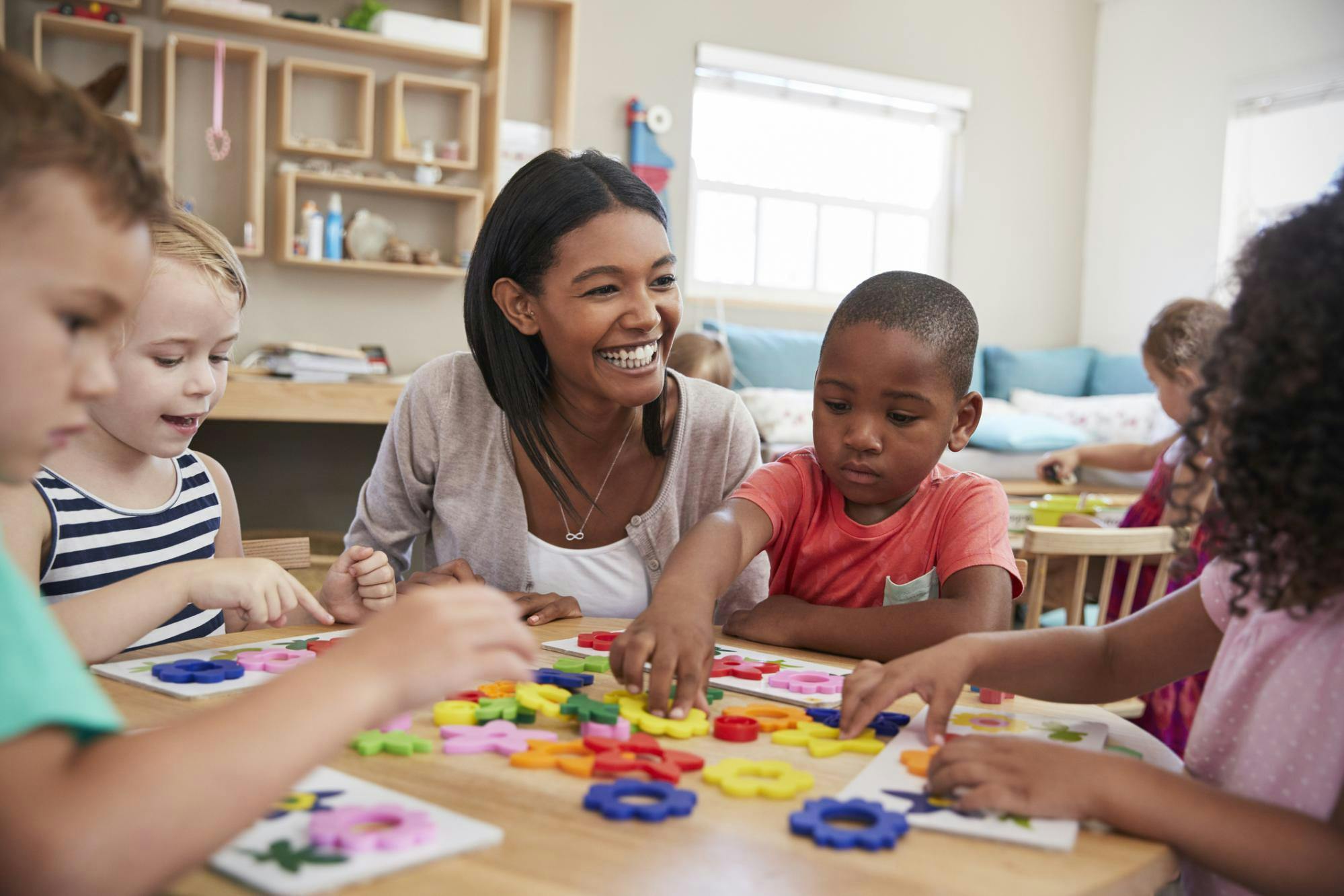
21st century skills are a range of competencies, taught across all levels of education, that give students the skills they need to navigate an ever-shifting workforce.
According to Bernie Trilling and Charles Fadel, authors of 21st Century Skills: Learning for Life in Our Times, 21st century skills reflect the idea that “the world has changed so fundamentally in the last few decades that the roles of learning and education in day-to-day living have also changed forever.”
The Organization for Economic Co-operation and Development (OECD) notes that 21st century skills transform students into “versalitists,” that is, students who can “apply depth of skill to a progressively widening scope of situations and experiences, gaining new competencies, building relationships and assuming new roles.”
Since the late 1980s, teachers and school leaders have sought to address the need for 21st century skills with makerspaces, flipped learning classrooms, genius hour, gamification and even elements of common core math.
Why 21st century skills are important

The OECD has described ongoing trends of globalization, technological progress and demographic change that aren’t likely to slow down in the near future.
Technology is improving at an exponential rate. Goods and services are routinely transported around the globe every day, and a study from Psychology Today found millennial workers switch jobs every 4.4 years, on average.
According to the OECD,
“We live in a fast-changing world, and producing more of the same knowledge and skills will not suffice to address the challenges of the future.A generation ago, teachers could expect that what they taught would last their students a lifetime. Today, because of rapid economic and social change, schools have to prepare students for jobs that have not yet been created, technologies that have not yet been invented and problems that we don’t yet know will arise.”
Emphasize adaptability, technological skill and all the other 21st century skills listed below to help your students thrive in the face of new challenges.
21st century skills in education
1. Problem solving
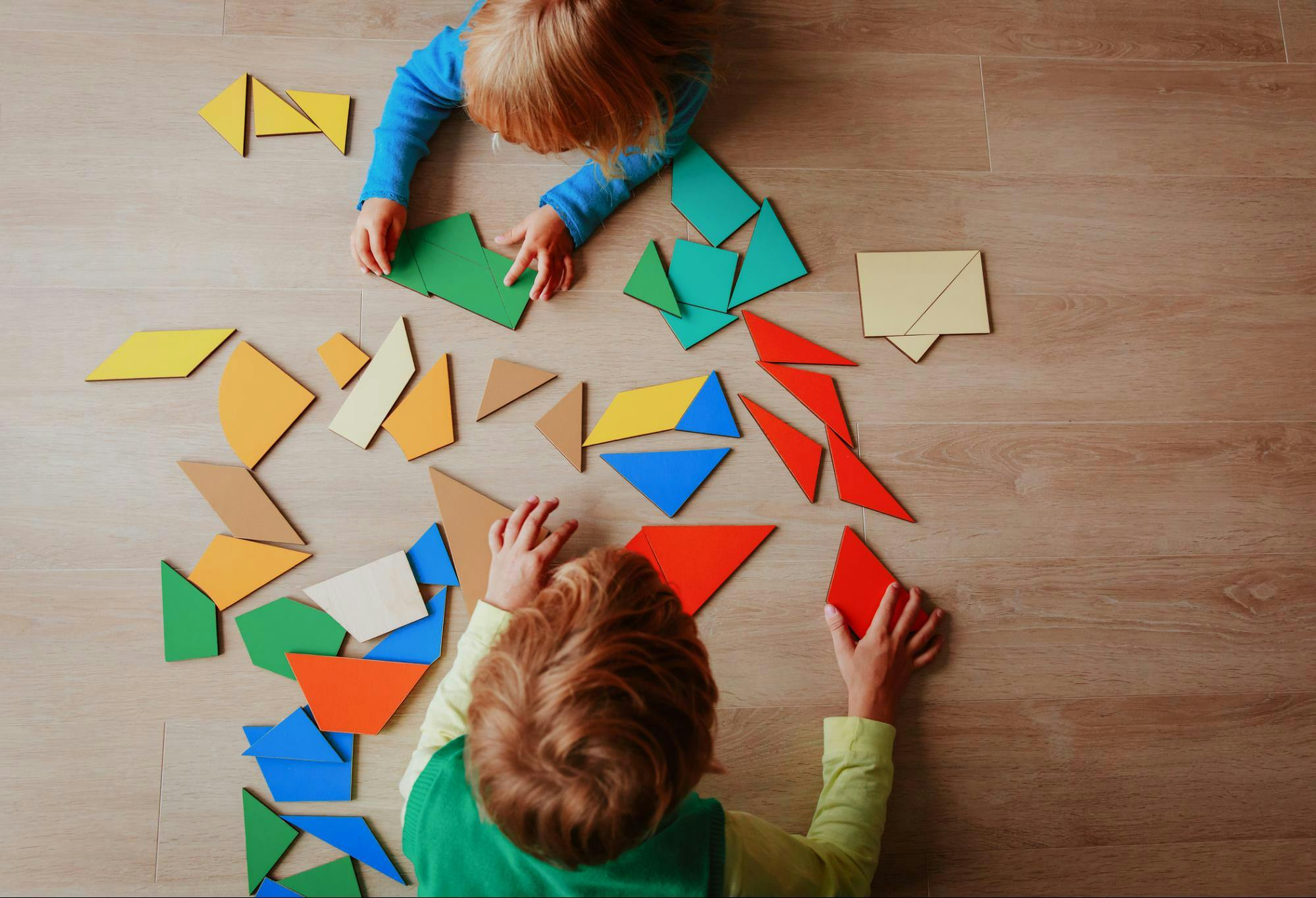
Students need to be able to solve complex problems as they occur. Effective problem solving involves several elements:
- Learning from previous problems
- Finding new ways to solve existing problems
- Solving problems independently or as a group
- Adapting behavior to different environments
Solution fluency asks students to define a problem, develop and deliver a solution and evaluate the process and results. There are six key steps to solution fluency:
- Define — Decide what needs to be solved
- Discover — Gather knowledge and research the problem
- Dream — Think about the possible ways the problem can be solved, and imagine what you want the end result to look like
- Design — Use information from previous steps to start building your solution
- Deliver — Complete and present the project (also known as Produce and Publish)
- Debrief — Reflect on where the project succeeded and what could be more effective next time
With these skills, students can master any new problems they might encounter, both in the classroom and the workplace.
2. Analytical thinking
Analytical thinking is a crucial step that comes before critical thinking. To think critically about something, students need to analyze it and break it down.
Analytical thinking can involve:
- Separating facts from opinions
- Determining the key points in a text
- Seeing patterns and relationships
- Breaking down complex problems into small steps
- Identifying cause and effect
- Processing information logically
Your students need to be comfortable with these steps before they can assess reliability and interpret information.
Analytical thinking is the fourth level in Bloom’s Taxonomy, a way to order cognitive skills for student learning.
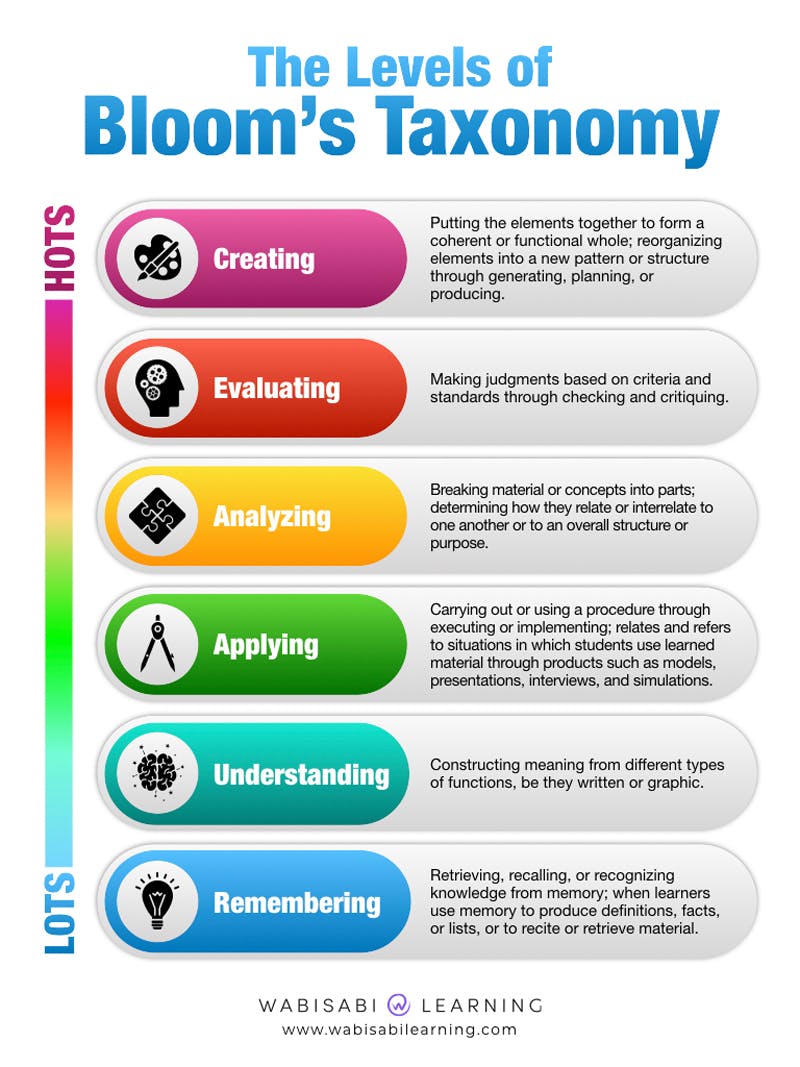
Source:Wasabi Learning
3. Critical thinking
In the classroom and in daily life, students don’t just passively receive information. They’re following, sharing and liking online content — so teaching them to think critically about source and meaning is essential.
Critical thinking, the step after analytical thinking, encourages students to develop metacognition skills and think more deeply about the problems they encounter. As one study states,
“Merely having knowledge or information is not enough.To be effective in the workplace (and in their personal lives), students must be able to solve problems to make effective decisions; they must be able to think critically.”
To foster critical thinking skills in your students, encourage questions like:
- “What do you think about this?”
- “Why do you think that?”
- “What is your knowledge based upon?”
- “What does it imply or presuppose?”
- “What explains it, connects to it, leads from it?”
- “How are you viewing the information?”
- “Should the information be viewed differently?”
4. Creative thinking
Engineers, musicians, teachers and accountants — in every occupation, workers need to use creative thinking skills to develop innovative solutions to complex problems.
Creative solutions involve using digital and non-digital tools to come up with unique and useful ideas, or make connections between previously unrelated ideas.
When students use creative thinking skills, they’re taking information from their analysis of a problem and the conclusions from their critique, and using them to create something new.
To teach creative thinking, teachers need permission from school leadership to approach classroom teaching, student assignments and achievement goals from different angles. This can include:
- Flexible seating
- Inquiry-based learning
- Interdisciplinary teaching
- Emphasizing student collaboration
5. Collaboration

Collaboration is essential when it comes to working and living in a cooperative society. Globalization and new communications technology have changed the way we think about cooperation in the workplace — and outside of it.
Want to encourage collaboration in your school? Try these techniques:
- Encourage teachers to assign collaborative projects. There are lots of ways to make collaborative work fun and exciting for students. Plus, they’re learning valuable skills that will benefit them later in life.
- Provide extracurricular activities that actively involve students. Offer clubs around common interests, like robotics, chess or a student newspaper. Challenge students to work together on a project or in a competition, and see what happens!
- Encourage teachers to collaborate on leading after-school activities, creating interdisciplinary assignments and sharing professional advice. When students see teachers collaborating, they’ll be more likely to try it for themselves.
In both digital and physical spaces, students should be able to develop ideas and work on projects together.
6. Media and information literacy

According to the OECD, literacy today is about managing “non-linear information structures,” like the internet, and learning to separate information from misinformation.
This means when students receive information (passively scrolling through Instagram) or seek out information (writing a research paper), they should be able to find trustworthy sources, identify relevant information and interpret what they’re consuming correctly.
In your school, you can encourage teachers to:
- Go over best research practices with students
- Examine the trustworthiness of news sources or popular social media posts
- Build information and media analysis into classroom activities, so students can learn firsthand how to sort knowledge from misinformation
7. Technology skills
Today’s students use technology to achieve goals differently.Instead of heading to the library and browsing stacks to find research material, they head to the internet and browse hundreds of online databases filled with information.
According to agroup of researchers in the Netherlands, graduating students must have:
“the skills to use information and communications technology to efficiently search, select and organize information to make informed decisions about the most suitable sources of information for a given task.”
So, what does this look like in your building?
- Teach students how search engines work, and how to use search tools to find reliable information quickly.
- Challenge teachers to introduce new software programs into their classroom that teach relevant skills or offer resources.
- Consider offering courses that teach students the basics of coding, or run an after-school robotics or computer club.
8. Networking
The old adage, “It’s not what you know, it’s who you know,” is still true today.According to Julia Freeland Fisher, director of education research at the Clayton Christensen Institute,
“Amid arming 21st-century high school graduates with all sorts of hard and soft skills that modern life and work demands, we should also aim to arm them with a strong, reliable and diverse network.”
Network gaps are as harmful for students as skill gaps, and can contribute to inequality. Economically or socially disadvantaged students are often less able to make professional connections early on, or even realize they need to.
To give all your students a boost when it comes to networking, there are a few things you can do:
- Practice in a careers class — Have students think about what career opportunities they want to pursue, and practice introducing themselves at a mock networking event.
- Use EdTech — There are plenty of online resources that connect students with professionals, peers and resources to help them succeed in and out of the classroom.
- Invite professionals into the classroom — Encourage teachers to invite relevant professionals into the classroom to talk about the real-world applications of what students are learning.
How to promote 21st century skills in your school
Not just limited to STEM subjects, 21st century skills look different in every school.
A focus on 21st century skills might be part of your school mission statement, or just one part of building prepared students.
However you choose to emphasize them, there are several strategies that can promote 21st century skills in your school:
EdTech tools
EdTech tools help students learn relevant course content in an engaging and applicable way, and they often teach computer and digital literacy skills.
In a survey of North Carolina teachers, 85% responded that they believed digital tools can provide immediate, ongoing information about student understanding and increased learning.
Here at Prodigy, we want to make sure every student has the skills they need to become lifelong learners. Our engaging, game-based math platform encourages students to love learning math and gives teachers access to essential tools that make classroom learning even more effective — and teacher accounts are free.
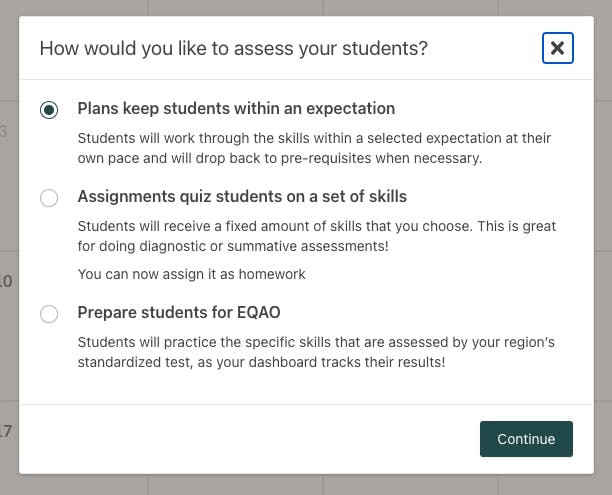
Teachers can access Reports, differentiate content for individual students, and prepare students for standardized tests. Our adaptive algorithm ensures students are always working in their zone of proximal development and gives them the confidence they need to tackle more challenging problems. Sign up for your free teacher account today!
Professional development

Teachers know what their students need, but they often lack access to tools, resources and training.
As Bev Purdue, former governor of North Carolina, writes,
“District and state leaders must give teachers theprofessional developmentopportunities they need to bring their classrooms into the 21st century, along with the infrastructure to support digital learning for all students, not just those from affluent districts.”
Here’s what that could look like in your school:
- Set up personal learning plans that empower teachers to seek out upskilling opportunities and set concrete learning goals.
- Organize peer teaching activities, where teachers can chat with and observe their colleagues to see how each teacher incorporates 21st century skills into their classroom.
Run workshops that equip teachers to use new teaching strategies or educational software, giving them hands-on demonstrations and offering concrete entry points to bring it into their classroom.
Personalized learning

Personalized learning involves students in their own learning process, teaching them several valuable skills:
- Communication
- Collaborative skills
- Effective goal-setting
- Self-assessment and confidence in existing skills
While it can take many forms depending on your school’s needs, personalized learning changes the way both teachers and students approach learning.
Want to know more? Check out our 7 Personalized Learning Strategies and Examples post!
Encouraging diversity in the classroom can prepare students to communicate and appreciate the diversity they’ll encounter when they start working.
Here are some ways you can start:
- Professional development — Encourage teachers in your school to teach diversity by giving them opportunities to learn how to teach for a global classroom.
- Connect with parents and the community — How can you teach students to enter the workforce if you don’t understand the community they’re living in now?
Hire diversely — A staff that reflects the diversity in your school and in real life will expose your students to different ideas and teaching styles, making them stronger as a result.
Interdisciplinary teaching
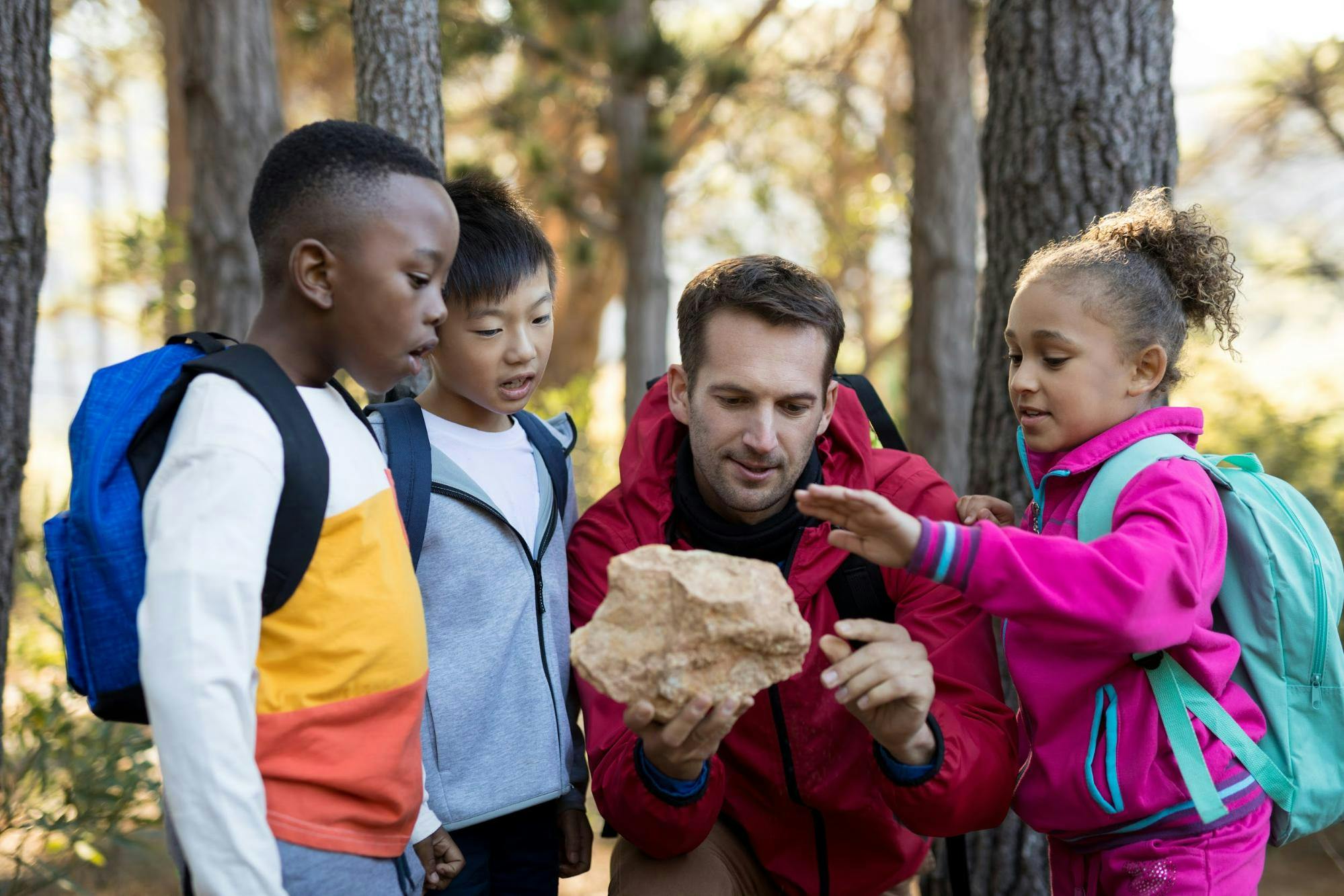
One of the best ways to encourage students to think critically and draw conclusions between data, mediums and subjects is interdisciplinary teaching.
As global barriers break down, it feels appropriate to mirror that in the classroom.
With interdisciplinary teaching, students will:
- Collaborate on projects
- Make new connections between subjects
- Think critically about the questions being asked
You can encourage interdisciplinary teaching in your school by pairing subject-specific teachers with each other and challenging them to come up with a project, or by offering professional development for teachers that shows them how to best approach interdisciplinary teaching.
For more ideas, check out 10 Interdisciplinary Teaching Activities and Examples!
Final thoughts about 21st century skills
In today’s quick and constantly shifting world, 21st century skills are essential. When students are able to adapt to new requirements and overcome unexpected obstacles, they’ll thrive no matter where their life takes them.
Your focus on 21st century skills should move beyond just a line in your school mission statement and into practical classroom and school-wide applications. Start slow, and work your way up if it seems daunting. Students will reap the benefits in and out of the classroom.
Want an effective EdTech tool that can support your students as they develop 21st century skills? Try Prodigy — the engaging, curriculum-aligned math platform used by teachers and school leaders around the world.
Teachers can use Prodigy to:
- Align in-game adventures with classroom lessons
- Collect insights into student progress and learning gaps
- Send differentiated content and assessments in just a few clicks



